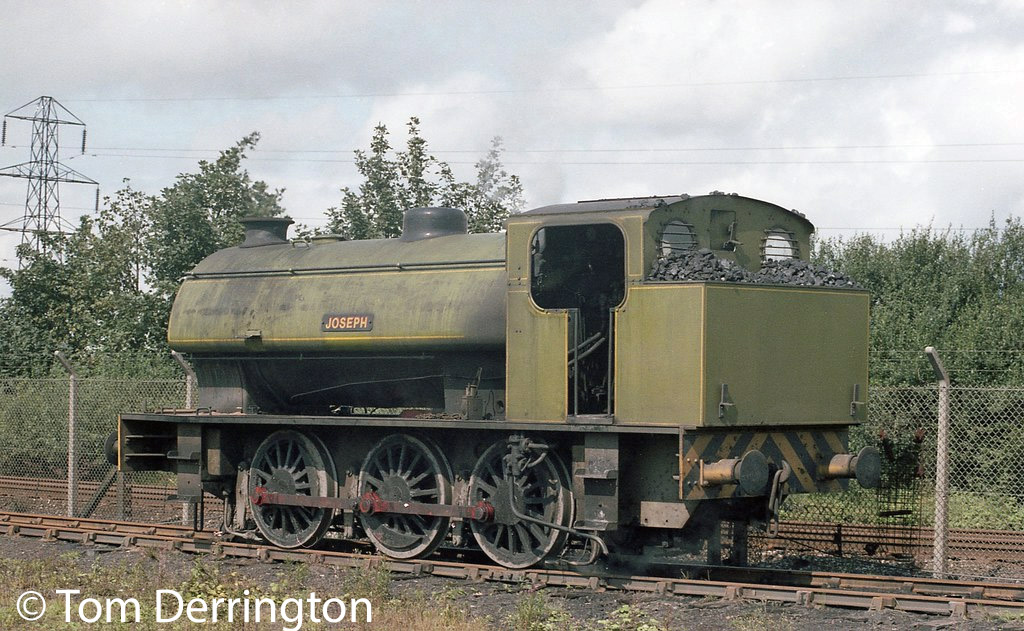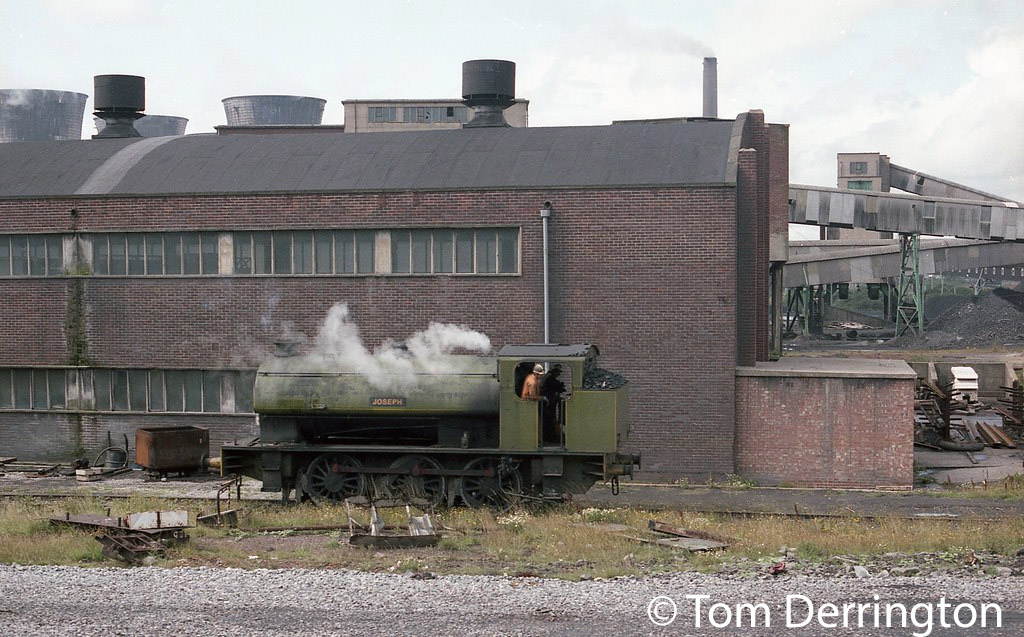
See LNER class J94 for details.
This locomotive was built in 1944 by the Hunslet Engine Company for the Ministry of Defence. It then entered service as WD 75113. Interestingly the locomotive was originally delivered without works plates but was stamped 3163.
The locomotive was delivered new to Bicester which was a Royal Airforce station in April 1944.
After the war the locomotive carried the number 132 in line with the renumbering of the Ministry of Defence locomotives.
It is recorded as visiting the GWR at Oxford for repairs in May 1947 after which it returned to Bicester.
The locomotive was moved to the Cainryan Military Railway at Stranraer in December 1950.
The railway at Stranraer was constructed in some haste in the 1940s and might have been considered to be redundant at the end of the Second World War. There was however a need to dispose of a large amount of surplus ammunition at the end of the war and the quickest and cheapest way to deal with it was to dump it at sea. Over the next few years the railway was used to carry countless wagonloads of explosives of all kinds. Bombs, large and small; mines; sea and land shells; grenades; small arms ammunition; and fuses poured into Cairnryan. Gas shells were loaded on to unwanted ships, like the Empire Claire, which sailed on a last voyage to be scuttled at sea. A particularly horrible cargo of German nerve gas arrived by sea from Wales and was likewise committed to the deep.
The locomotive was next employed at Longtown, where it arrived in January 1952. Longtown, which is located on the England-Scotland border just north of Carlisle. It was the site of a munitions factory and a secure munition storage site. It was registered with the Railway Executive in 1952 as 427/52.
It was fitted with Vacuum brakes – probably by the end of 1954.
In August 1955 the locomotive was located at the Central AmmunitionDepot at Bramley in Hampshire.
In April 1957 the locomotive returned to Bicester for storage before being taken into service the following year. Between May 1959 and June 1961 when the locomotive was out of use it carried the name Sapper.
In October 1962 the locomotive was sold back to the Hunslet Engine Company and was rebuilt as 3885 when it was completed in 1964. The rebuild was the result of a bid to meet stringent restrictions on smoke emissions.
The Argentinian, Ing. L.D.Porta was commissioned by the Hunslet company to design certain modifications. Following the company becoming aware of Porta technology when, unsuccessfully, bidding for the contract to build the second batch of 75cm gauge 2-10-2 locomotives for RFIRT, Argentina.
Research suggests the locomotives may not have been quite as Porta would have wished. It is felt something could have been lost ‘in the translation’ between Argentina and the UK. However despite some shortcomings these locomotives did serve an important purpose in the development of steam. They were the very first application of Porta’s work outside of his native Argentina.
The rebuild involved fitting a form of Kylpor ejector system and the provision of a underfeed stoker with a modification the coal bunker to allow a hopper feed to the stoker.
Locomotive No.3883 was sent to BR Swindon in late January 1963 and for a week in February 1963 it was utilised as Swindon MPD pilot locomotive. This period allowed experiments to be undertaken with various coal sizes. Later in February the locomotive was formally handed over to the BR Research Department (Swindon) for controlled road test. The testing was undertaken over the approximately 18 miles stretch of mainline between Yarnton and Kingham on the Oxford – Worcester mainline, today called the Cotswold Line.
Tests on Works Number 3883 demonstrated significant improvements over a standard locomotive with a steaming rate of 12,000lbs/hour being achieved compared with 6,000lbs/hour for an unmodified locomotive. A maximum output of 898hp was recorded, a very impressive figure for what was a shunting locomotive. These tests were the last time a steam locomotive was formally tested by British Railways with a dynamometer car.
As 3885 it was loaned to the Coventry Homefire Plant between May 1965 and May 1966 when it was returned to the Hunslet Engine Company.
Its next employment was at NCB Walkden workshops in July 1970 where it gained the name Alison and given the NCB number 63.000.410. In December 1970 it moved on to NCB Gresford before going to NCB Bold in April 1974 where it was renamed Joseph in February 1980. It remained working at Bold until 1984 when it was taken out of service.
The locomotive has the distinction of being the last steam locomotive in industrial service in the UK, being taken out of use from Bold Colliery in 1984
Its first move in preservation was in April 1986 to the Chatterley Whitfield Mining Museum in Staffordshire which had opened in 1979. There were problems at Chatterley Whitfield with the water levels and gas in the mines and the underground tours had to be stopped. As a result of this a new a new mining experience was opened in 1986 but the museum was forced to close in 1993.
In early 1989 the locomotive went to the Crewe Heritage Centre for an overhaul.
In 1994 the locomotive moved to the South Devon Railway (SDR) where it worked for a couple of years before being withdrawn from service.
Sapper was sold by the SDR to a private buyer in 2009 and was fully overhauled by the Flour Mill before making the East Lancashire Railway its home.
Although the private owner and is based on the East Lancs Railway it is on loan from Road & Rail Steam Services to the Avon Valley Railway.














